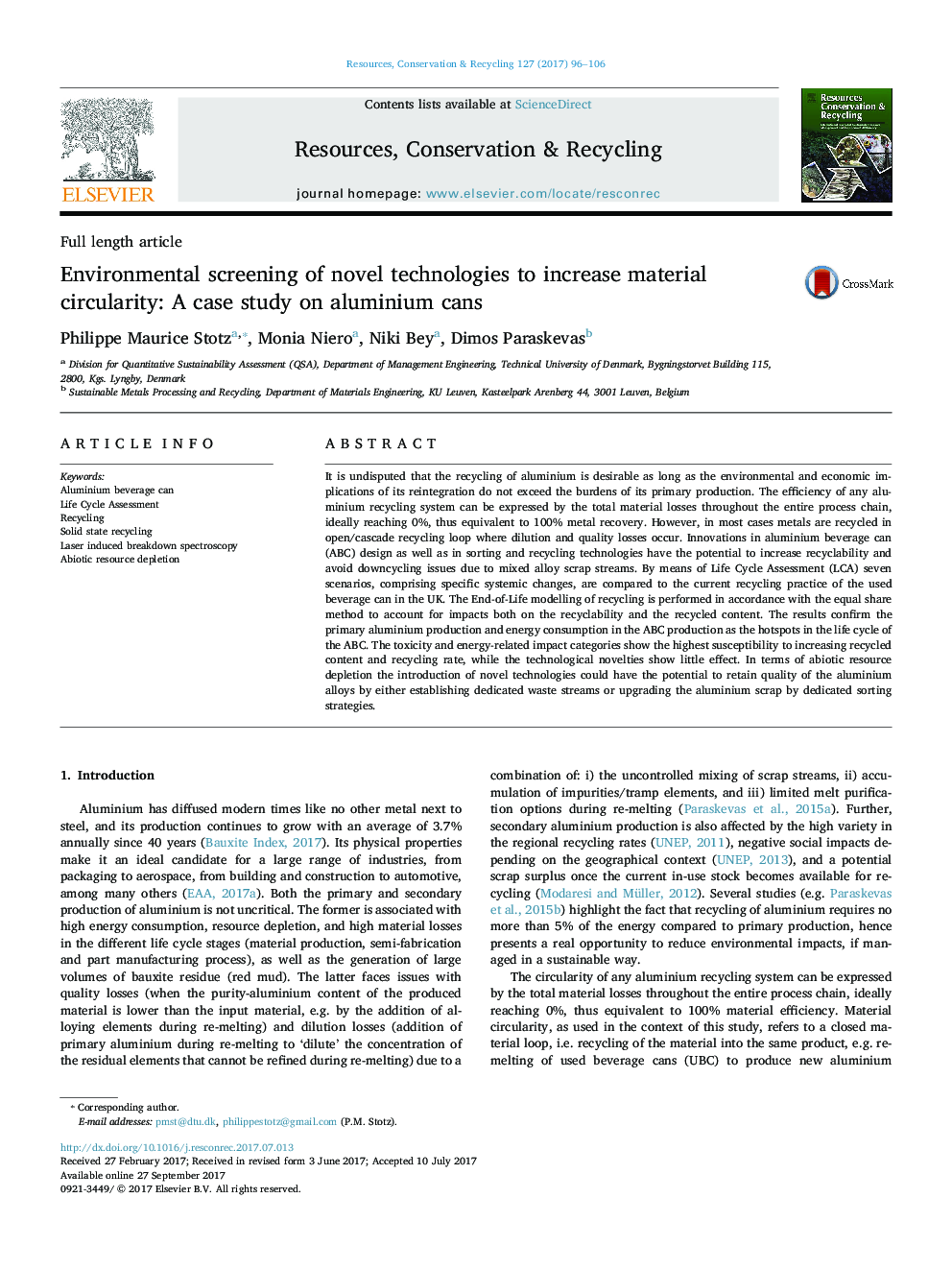| کد مقاله | کد نشریه | سال انتشار | مقاله انگلیسی | نسخه تمام متن |
|---|---|---|---|---|
| 5118590 | 1485665 | 2017 | 11 صفحه PDF | دانلود رایگان |
- Environmental assessment of novel technologies to increase material circularity.
- Technologies primarily maintain material quality to avoid downcycling.
- Technology scenarios have little impact on Global Warming Potential.
- Recycled content and recycling rate are the key to improved environmental performance.
- Energy consumption in beverage can production expected to be the future hotspot.
It is undisputed that the recycling of aluminium is desirable as long as the environmental and economic implications of its reintegration do not exceed the burdens of its primary production. The efficiency of any aluminium recycling system can be expressed by the total material losses throughout the entire process chain, ideally reaching 0%, thus equivalent to 100% metal recovery. However, in most cases metals are recycled in open/cascade recycling loop where dilution and quality losses occur. Innovations in aluminium beverage can (ABC) design as well as in sorting and recycling technologies have the potential to increase recyclability and avoid downcycling issues due to mixed alloy scrap streams. By means of Life Cycle Assessment (LCA) seven scenarios, comprising specific systemic changes, are compared to the current recycling practice of the used beverage can in the UK. The End-of-Life modelling of recycling is performed in accordance with the equal share method to account for impacts both on the recyclability and the recycled content. The results confirm the primary aluminium production and energy consumption in the ABC production as the hotspots in the life cycle of the ABC. The toxicity and energy-related impact categories show the highest susceptibility to increasing recycled content and recycling rate, while the technological novelties show little effect. In terms of abiotic resource depletion the introduction of novel technologies could have the potential to retain quality of the aluminium alloys by either establishing dedicated waste streams or upgrading the aluminium scrap by dedicated sorting strategies.
Journal: Resources, Conservation and Recycling - Volume 127, December 2017, Pages 96-106
